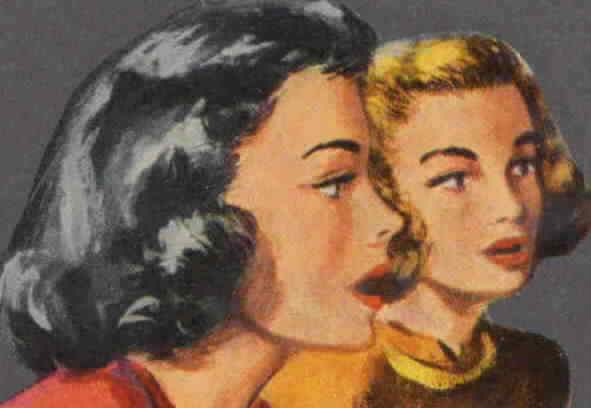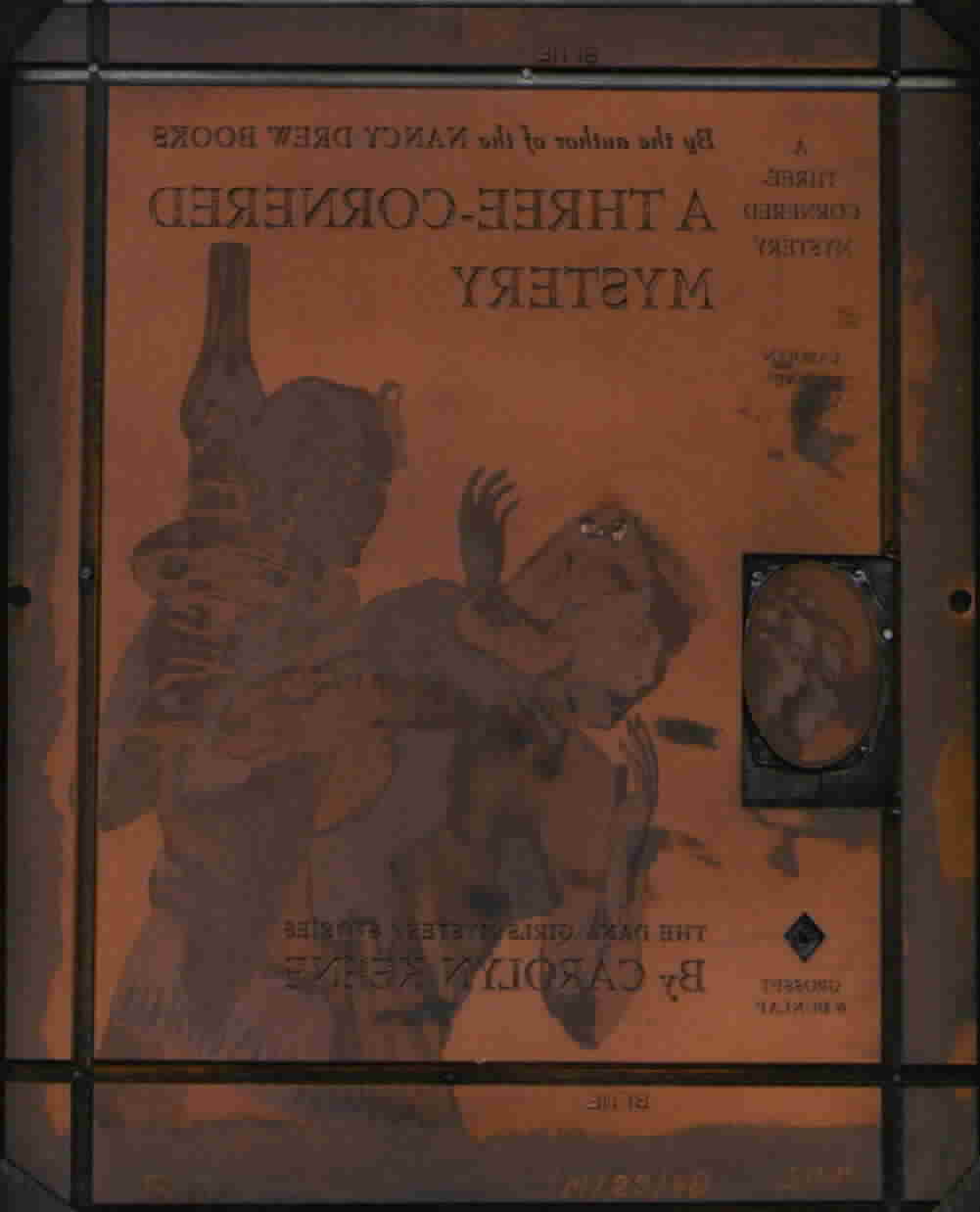 |
The Dana Girls Mystery Stories
|
|
|
||
| The Dana Girls Mystery Stories were published noncontinuously from 1934 to 1979 by Grosset and Dunlap. The first grouping consists of volumes 1 through 13 which were published from 1934 to 1944. During the 1930s, the books had stylish lavender dust jackets, and during the later 1930s and early 1940s the books had stylish turquoise dust jackets.
After the publication of volume 13, the series was discontinued. During the mid-1940s, Grosset and Dunlap terminated many series that were not selling very well, and the Dana Girls was one of the series that went out of print. The sudden termination of the Dana Girls series is the probable reason that some scattered copies of Nancy Drew books from the late 1940s contain the Dana Girls endpapers. Rather than waste endpapers which had already been printed, the bindery put them to good use. The Dana Girls series went back into print in 1949 with the reprinting of the earliest titles in the series in the wraparound dust jacket style. The first 13 titles were gradually reissued in the new style dust jacket from 1949 to 1951. In 1952, the series continued with new titles until the publication of volume 30 in 1968 when it went out of print for the second time. In 1972, the series was reissued once again with slightly revised versions of volumes 17 and 19 through 30. The revised stories were renumbered with original #25-30 becoming new #1-6, original #20-24 becoming new #7-11, original #19 becoming new #12, and original #17 becoming new #13. The new set had new cover art. Four additional new titles, volumes 14 through 17 in this set, were published from 1976 to 1979. The series went out of print for the third and final time in 1979. A paperback series was planned around 1980, but the plan never came to fruition. |
|
|
| Note: In late 2009, two new Dana Girls books appeared for sale on several sites. The books are titled The Mystery of the Cameo Curse and The Secret at the Windmill Estate. These books were published by a collector and are not official editions. They could perhaps best be described as fan fiction. The author took two Kay Tracey books and rewrote them as Dana Girls books. While I have not read the books, I understand that the majority of the content is copied from the Kay Tracey books. | ||
|
|
||
| The Authors
Several authors wrote the series under the pseudonym of Carolyn Keene: #1-4 by Leslie McFarlaneLeslie McFarlane is known best for authoring the early Hardy Boys books under the pseudonym of Franklin W. Dixon. McFarlane did not enjoy writing the Dana Girls books and declined to continue the job after he wrote the fourth volume. Mildred A. Wirt Benson took over the duty and was the obvious choice since she was already writing the Nancy Drew books at that time. Harriet S. Adams took over writing the Dana Girls series at about the same time that she took over writing all of the Nancy Drew books. |
||
|
|
||
| The Premise
The Dana Girls series is like both the Hardy Boys and Nancy Drew combined into one series. The Dana Girls go to school like the Hardy Boys and share a level of independence similar to Nancy Drew in spite of being students. The Danas are often granted permission to be away from school to solve their mysteries. The Danas have a jealous rival, Lettie Briggs, who plays mean-spirited tricks on the girls, and as a result, gets into trouble with the headmistress, Mrs. Crandall. The Danas play tricks on Lettie in retaliation but rarely get into trouble. The Danas are orphans whose guardians are their Aunt Harriet and Uncle Ned, who are brother and sister and live together. Uncle Ned is a reference to Edward Stratemeyer, who founded the Stratemeyer Syndicate, an organization that supplied publishers with stories for publication. The Dana Girls series was created by Stratemeyer's daughters, Harriet Stratemeyer Adams and Edna Stratemeyer Squier. Aunt Harriet is a reference to Harriet Adams herself. During the final Dana Girls volumes published in the late 1970s, Aunt Harriet takes a very active role in the mysteries, sometimes doing more than the Dana sisters do themselves! |
||
|
|
||
| Prices and Scarcity
First of all, there are no Dana Girls books that are RARE. There are certain sellers on eBay who describe any book that is all at scarce as a RARE book. It is usually best for beginning collectors to watch auctions carefully before plunging in and to take a look at recently completed auctions in order to get a feel for what the current prices are. I cannot possibly state what you can expect to pay for a typical Dana Girls book because the prices are constantly changing based on supply and demand. I am going to give some price ranges, and this is only as a comparison as to what one book may be worth when compared to another. Prices used to be much higher than what they are now; yet, even now, the prices can temporarily increase when several people are rapidly building their collections. The early, thick books with glossy internal illustrations and intact dust jackets used to sell in the hundreds of dollars. Nowadays, those same thick, dust-jacketed books can be found for under $100 and sometimes for under $50. Without dust jackets, the thick books with internal illustrations are probably worth no more than $5-$15. The 1940s and 1950s books with dust jackets can also be found for reasonable prices, probably for $10-$40. Missing the dust jackets, the books are worth very little, probably less than $5. The 1960s picture cover books tend to go for around $10 and up. The first few volumes are more plentiful and may go for just a few dollars. The higher-numbered books are more scarce and will cost more. #27 typically goes for around $10-$25. #28 and #29 typically sell for around $25-$50. #30 can easily sell for around $100 provided that it is in excellent condition. For the second series Dana Girls books from the 1970s, most of the books are worth very little, probably less than $5. #14 is slightly harder to find and is probably worth $5-$10. #15-17 are the hardest to find white spine picture covers. #15 is probably worth around $10-$25. #16 and #17 are probably worth around $25-$35. |
||
|
|
||
| Cover Art Galleries | Brief Summaries | |
|
|
||
| Back to Main Page | ||
